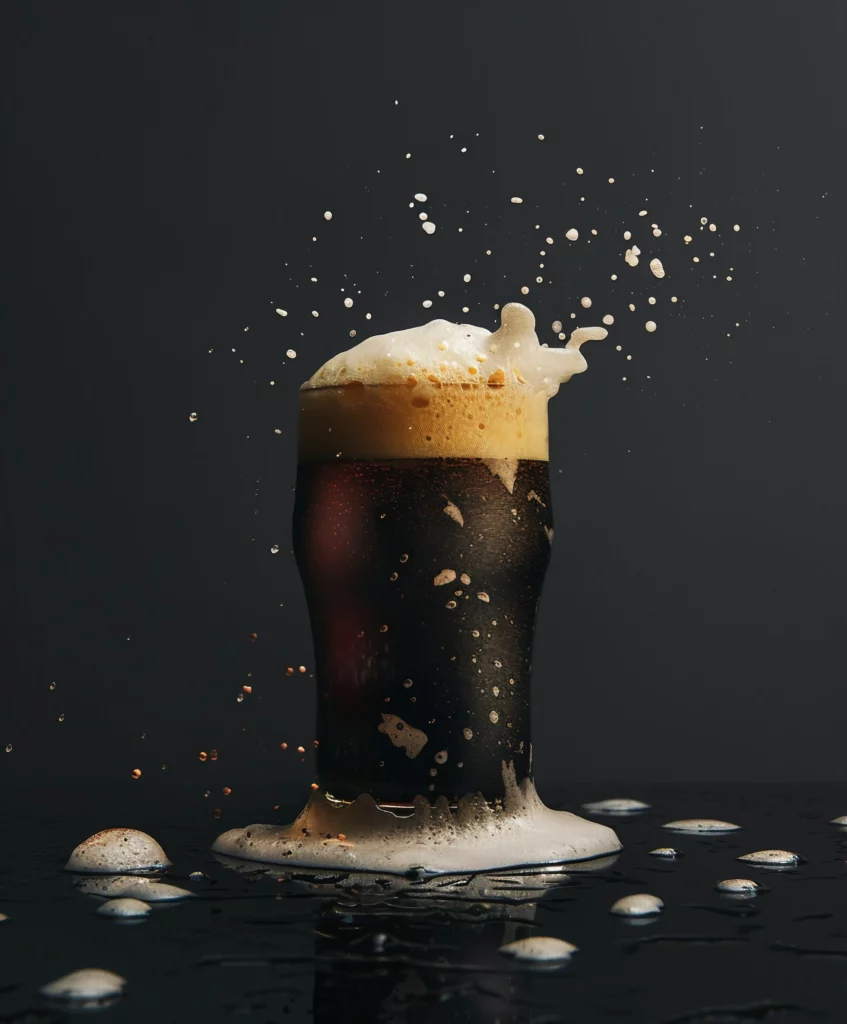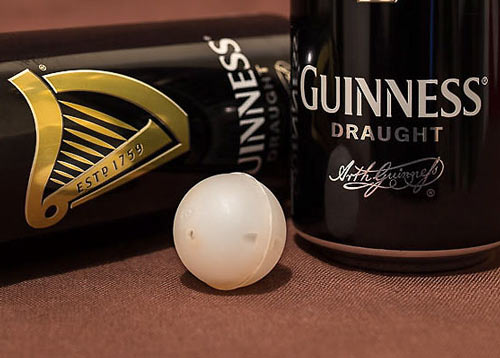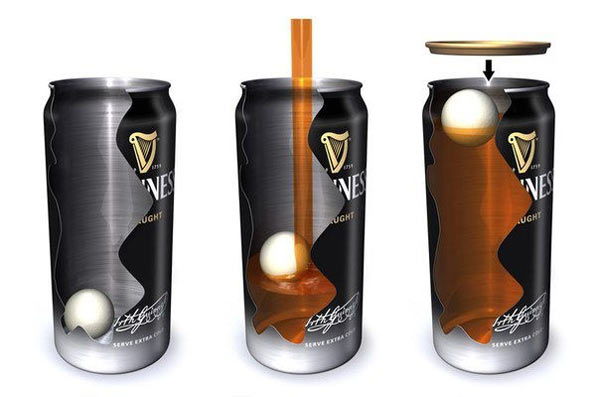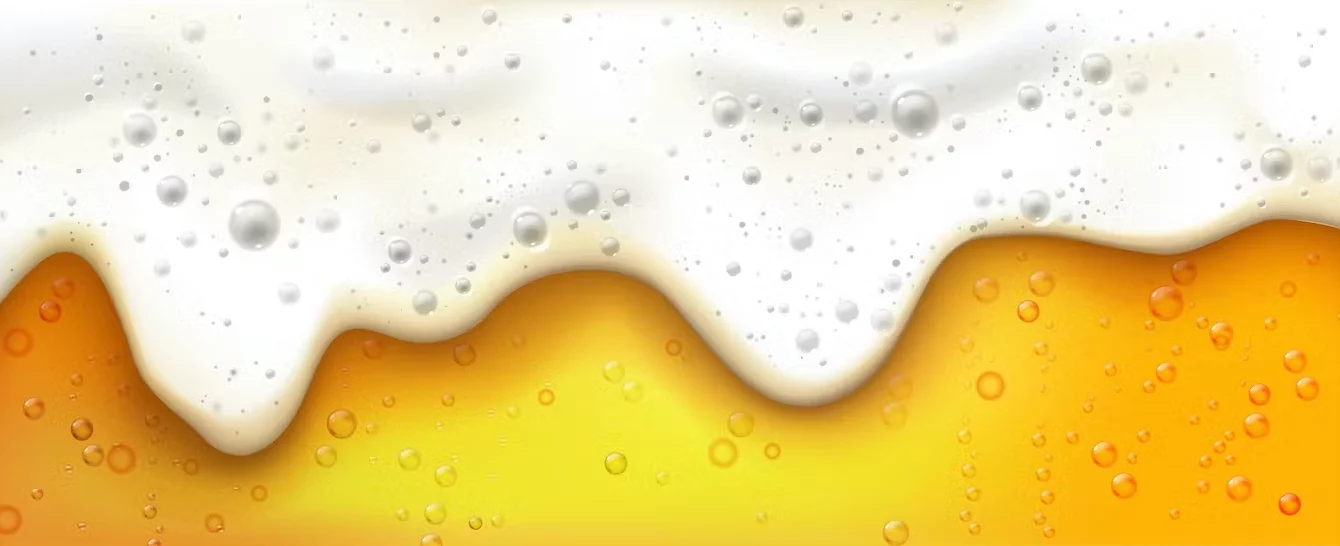Despite the history of beer, which has been brewed by dynasties, brewers are always striving to discover new horizons and flavours. No brewer rests on its laurels, tirelessly upgrading and improving its brewing facilities and inventing new flavours year after year.

The only thing that remains unchanged in this magical drink is the presence of foam. Its importance cannot be overestimated, as it is an attribute that conveys the entire flavour of beer. And without it, this favourite drink loses its significance and becomes not so interesting. So we all know how to pour beer into a mug or glass.
Mmm... It's so delicious when a dense foam or beer head, consisting of small gas bubbles, forms on the surface of the glass. Fans of the foamy drink even believe that the higher and denser the foam, the better the quality of the product.
In the vast majority of modern beer brands, the foamy head is formed by carbon dioxide, or CO2 in chemistry terms. This raises the question: "Where does it come from inside the can or bottle?". First of all, the appearance of carbon dioxide occurs as a result of the natural fermentation reaction of beer wort. However, its amount is not very large. To create a better visual effect, producers additionally carbonate their foamy products.
The peculiarity of nitrogen beer is that brewers add nitrogen to the bottle rather than CO2. The only real difference between these types of beer is the nature and quality of the resulting foam. In the case of nitrogen, the beer head lasts much longer and looks more aesthetically pleasing.
What has happened over the years? Today, nothing has changed, this intoxicating drink is still enjoyed by many people, it just becomes even tastier and more attractive over the years.
Therefore, it is no secret that nitrogen beer is becoming the benchmark for taste and is particularly popular. Perhaps many people still do not know how nitrogen beer differs from beer with added carbon dioxide? After all, there is a difference between these drinks. We have already mentioned that most beer producers add carbon dioxide to beer. During the natural fermentation process, it is released on its own, but not in the quantities required by the manufacturer. Therefore, they additionally carbonate their beer products. As a result, you get a glass of delicious beer with foam in a bar, and the denser the foam, the higher the quality of the product. Unlike regular beer, nitrogen beer has nitrogen added to it.
As a rule, when a person comes to a bar and orders a glass of beer, they expect to receive a high-quality product with a thick foam.
A regular bottle of beer does not have this effect, and to remedy this, manufacturers have invented the so-called nitrogen capsule. Most people who have tried nitrogen beer at least once can no longer drink any other beverage. Thus, nitrogen plays a significant role in brewing. It is used in many stages of production.


From the outset, nitrogen has been used to store grain crops used in beer production. Grain blowing is a process in which inert gas displaces oxygen and prevents aerobic bacterial growth, thereby extending the shelf life of grain crops. Furthermore, to prevent the taste of the drink from deteriorating, the tanks are first filled with nitrogen and then beer is poured in, as oxygen affects not only the shelf life of beer but also its taste. The compressor station used in this process allows these and other manipulations to be carried out.
Nitrogen is also used in the purification stage to remove moisture and other gases. The use of nitrogen in purification reduces water consumption and prevents product oxidation, minimising end product loss.
Due to the fact that nitrogen has low solubility, when this gas enters a container with beer, bubbles appear, thus ensuring the mixing of bottom-fermented beer with regular beer.
And the last process involving nitrogen is displacement. Nitrogen is used to displace carbon dioxide. If carbon dioxide levels are high, the taste of beer deteriorates and the drink spoils more quickly due to foaming.
Now it is not surprising why the Irish, taking advantage of nitrogen technology at the right time, invented the most delicious nitrogen-based alcoholic beverage called Guinness. It has a thick head and a very pleasant taste, and is considered the benchmark among alcoholic beverages. What makes it unique?
The fact is that the manufacturer places a small plastic capsule in each bottle. This is the manufacturer's patent, its calling card. Each capsule, measuring two centimetres, contains nitrogen. This solution allows the manufacturer to preserve all the taste qualities of the drink during transport and storage. The British company began using this technology back in 1989 and still uses it today. This small capsule has been awarded the title of an innovative breakthrough in Great Britain. That is why Guinness is considered the leading beer brand in the world.
What is your favourite beer drink?
By the way, if you are trying to connect your life path with the production of delicious beer, Steiner Ukraine offers nitrogen dispensers of various capacities. Contact our specialists, and they will select a nitrogen dispenser that best suits your needs at an affordable price.
Remember! Beer is a delicate product, just like bread, and must always be fresh and tasty: this is what consumers expect. Beer lovers have high expectations when it comes to freshness, taste and aroma, and it is important not to disappoint them. Modern technological processes, storage and bottling systems allow you to offer customers beer without defects and successfully run your business.



